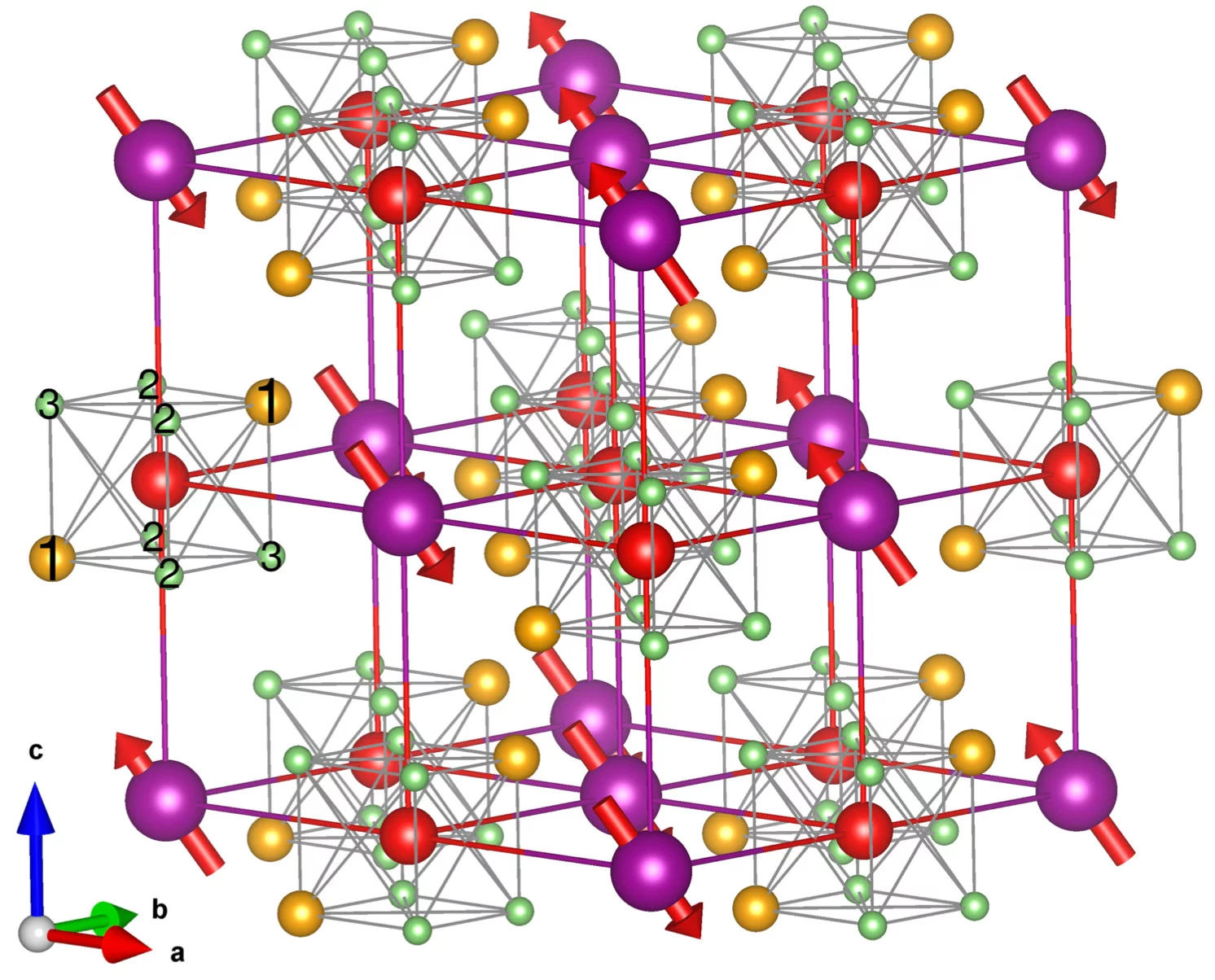Magnetostriction results from the coupling between magnetic and elastic degrees of freedom. Though it is associated with a relatively small energy, we show that it plays an important role in determining the site of an implanted muon, so that the energetically favorable site can switch on crossing a magnetic phase transition. This surprising effect is demonstrated in the cubic rocksalt antiferromagnet MnO which undergoes a magnetostriction-driven rhombohedral distortion at the Néel temperature TN = 118 K. Above TN, the muon becomes delocalized around a network of equivalent sites, but below TN the distortion lifts the degeneracy between these equivalent sites. Our first-principles simulations based on Hubbard-corrected density-functional theory and molecular dynamics are consistent with the experimental data and help to resolve a long-standing puzzle regarding muon data on MnO, as well as having wider applicability to other magnetic oxides.
Facility: SμS
Reference: P. Bonfà et al, Physical Review Letters 132, 046701 (2024)
Read full article: here



